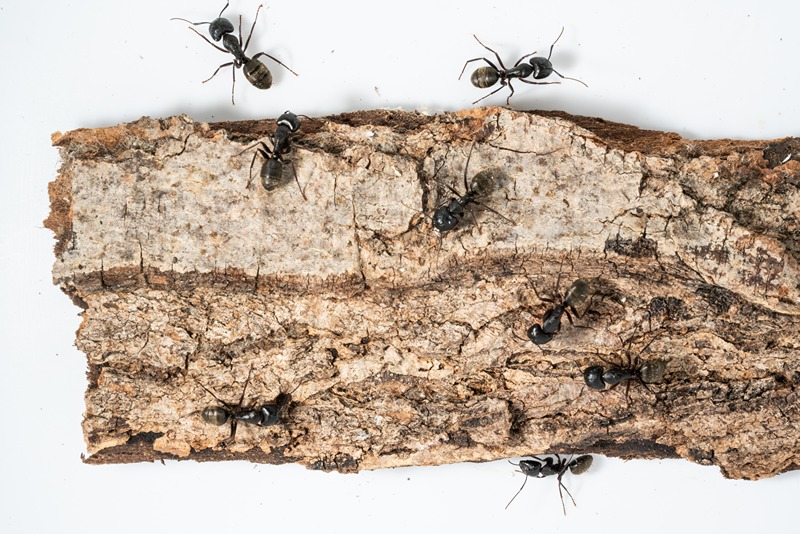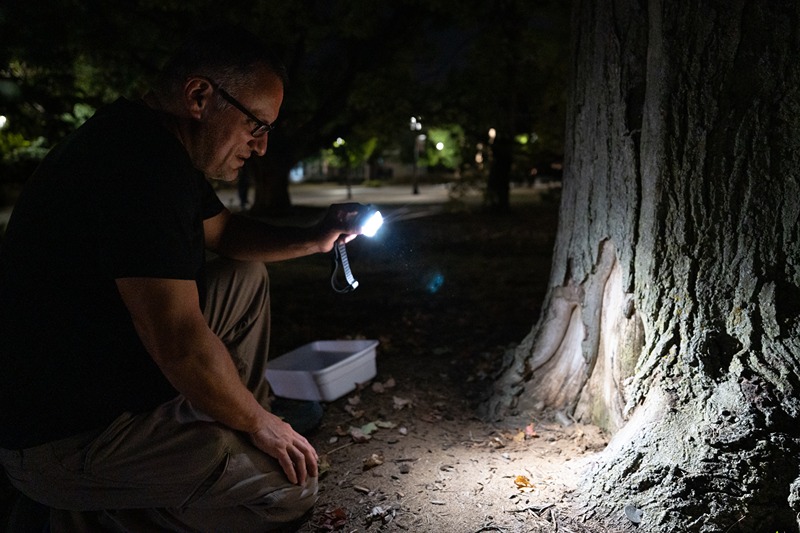Whether foe or friend, carpenter ants are in your trees this fall
What species loves sugar, is willing to fight others for sustenance, and enjoys resting and working from home? If you guessed humans, you are not wrong, but these are also traits that we share with carpenter ants – both our foe and friend.
“These ants are a neat species to watch because they’re so large that you can observe their behaviors,” said Grzegorz Buczkowski, research associate professor of entomology at Purdue University. He is an expert on ant ecology, behavior and genetics, with an emphasis on pest control of urban and invasive pest species, like carpenter ants.
The six-legged insects – the largest of their species in the United States – are at peak activity in early fall. Notorious for causing serious structural damage to wooden houses and urban trees, there are over 50 species in the U.S., most commonly found in the Pacific Northwest and Northeast.
Although outnumbered by other ant species in Indiana, like common odorous ants, carpenter ants are still active and nesting in oak and maple trees, among other varieties, across regional forests, parks, college campuses and residential neighborhoods.
They pose the greatest risk to older, single-family houses. Properties that can fall prey are usually near decaying trees, creating the perfect bridge for ants to trail into cozy cracks and crevices. Clogged gutters and nearby fungal decay can also attract them.

The ants hurt urban trees by hollowing them out, damaging them enough that they need to be cut down. This could present a potential hazard to residents and passersby, and other animals taking residence in trees, like squirrels.
While they can be a giant nuisance, Buczkowski explained that carpenter ants, who work nonstop, play a vital role in the ecosystem. “They create nesting space in dead trees for other animals. They are the first insect to claim these trees, before fungi and beetles,” he said.
“This process helps natural wood decay and nutrient recycling,” said Buczkowski. Unlike termites, which are persistent and will cause major property destruction, carpenter ants only chew wood to create a nest, spitting out the rest. Their excavated nests are about the size of a basketball.
This ant species is also a primary food source for birds, including woodpeckers. In Indiana, carpenter ant colonies are the largest and most active from July to August. They start slowing down in September and October. After the first frost, they stop foraging and remain dormant inside their hollow hideouts.
In the early fall, carpenter ants are mainly hunting for food. Buczkowski said, “They collect honeydew from tiny, plant-sucking insects, called aphids. They farm aphids for honeydew and are fiercely protective of them, against other insect predators such as ladybugs.”
Ant colonies, in general, are also very competitive with each other. The biggest enemy of an ant is usually another ant. These insects produce formic acid, which they spray on to each other, when embroiled in territorial nest disputes.
“Being nocturnal, they have two peaks of activity: one hour after sunset and another before sunrise,” Buczkowski said. Ant colonies are also resilient: if a colony is wiped out, by pesticides for example, there is likely a colony nearby with a queen (an adult, reproducing female) that is ready to birth and give marching orders to new ants.

He added, “A colony’s lifespan is about twenty years. It will stay active until the queen grows older and starts laying less and less eggs.” If colonies started disappearing, it would cause a major ecological disaster, according to Buczkowski.
But as expert survivalists, ants persist; new populations will reappear and thrive – another essential trait they share with humans.






